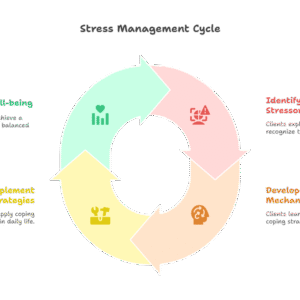High blood pressure often goes unnoticed because it can fluctuate throughout the day due to physical activity, stress, sleep, and other factors. Traditional blood pressure readings taken at a clinic may not reflect the complete picture. That’s where 24 Hour Blood Pressure Monitoring Service comes in. This method allows healthcare professionals to track blood pressure variations over an entire day and night, providing a more accurate overview of a person’s cardiovascular health.
What is 24-Hour Blood Pressure Monitoring:
24-hour blood pressure monitoring, also known as ambulatory blood pressure monitoring, is a diagnostic technique used to measure blood pressure at regular intervals over a full day and night. Unlike standard blood pressure checks taken during a doctor visit, this method captures blood pressure readings during your normal daily activities and while you sleep. The process provides a detailed profile of how your blood pressure fluctuates throughout the day, which helps in identifying issues that a single reading might miss.
How the Monitoring Device Works:
The device used for 24-hour monitoring consists of a small, lightweight blood pressure monitor connected to a cuff worn around the upper arm. The monitor is programmed to inflate the cuff and take readings at preset intervals—typically every 15 to 30 minutes during the day and every 30 to 60 minutes at night. The monitor stores all the readings, which are later analyzed to assess patterns and variations in blood pressure levels.
The device is compact and designed to be worn discreetly under clothing. It is powered by batteries and comes with instructions to ensure correct placement and use. The patient can carry on with normal daily routines, including going to work, walking, and even sleeping, while the device collects data continuously.
Why 24-Hour Blood Pressure Monitoring is Important:
Many individuals experience what is known as white coat hypertension, where blood pressure rises temporarily in a medical setting due to anxiety. Conversely, some may have masked hypertension, where readings appear normal at the clinic but are elevated during daily activities. A 24-hour monitoring session helps detect both of these conditions.
This method also helps determine if blood pressure remains high throughout the night, which is an important indicator of increased cardiovascular risk. Nighttime blood pressure that does not drop as expected may suggest potential health problems. Overall, this diagnostic approach supports more informed decision-making and treatment planning.
What to Expect During the Procedure:
Before the monitoring begins, a healthcare provider will fit the cuff and device to ensure comfort and accuracy. You will receive guidance on how to manage the device and what to avoid during the 24-hour period. Typically, patients are advised to avoid strenuous physical activities and to keep a diary noting times of meals, physical activity, emotional stress, and sleep.
During the monitoring period, it is important to sit or stand still whenever the cuff inflates to get the most accurate reading. You may feel slight discomfort due to the frequent inflation of the cuff, but most people find it manageable. It is recommended not to remove or tamper with the device unless absolutely necessary.
After 24 hours, the device is removed and the data is downloaded for analysis. Your healthcare provider will review the results and discuss any patterns or irregularities that may need attention.
Practical Tips for a Successful Monitoring Experience:
Wear loose-fitting clothing to accommodate the cuff and allow for easy movement. Make sure the monitor stays securely attached and keep the tubing free from kinks or bends.
Carry out your day as normally as possible, but avoid high-impact exercises or environments that could affect the device’s function. Refrain from taking a shower or bath unless you have removed the device under guidance, as it is not waterproof.
Keep a detailed activity log that includes meal times, physical exertion, emotional stress, and bedtime. This information helps correlate blood pressure changes with your daily routine.
Try to relax when the cuff inflates and stay still until it deflates. Sudden movement can result in inaccurate readings or errors in data collection.
Interpreting the Results:
Once the data is collected, a report is generated that includes multiple readings over 24 hours. These readings are analyzed for average daytime, nighttime, and overall blood pressure values. The report will show whether your blood pressure follows a normal circadian rhythm, which typically includes a dip at night.
Abnormal patterns such as sustained high pressure, lack of nighttime dipping, or large fluctuations may indicate the need for lifestyle changes, medication adjustments, or further testing. The results help your healthcare provider understand how your body regulates blood pressure in real-world conditions.
Benefits Over Traditional Monitoring:
The key advantage of 24-hour blood pressure monitoring is its ability to provide a comprehensive and accurate picture of your cardiovascular health. It detects inconsistencies that might not appear during a single reading at the clinic. The method supports early diagnosis, better risk assessment, and personalized treatment strategies.
It also minimizes the chances of misdiagnosis caused by temporary spikes due to anxiety or stress in medical settings. For people already diagnosed with hypertension, it helps evaluate the effectiveness of prescribed medications and suggests any needed adjustments.
Who Should Consider 24-Hour Monitoring:
This method is especially useful for individuals who show unusual or inconsistent blood pressure readings during routine checks. It is also recommended for people who have symptoms like headaches, dizziness, or fatigue that may be related to fluctuating blood pressure.
Patients with high cardiovascular risk, diabetes, kidney issues, or a family history of heart disease may benefit from periodic 24-hour monitoring. It’s also an effective tool to assess the impact of new medications and lifestyle interventions.
Conclusion:
Understanding the process of 24-hour blood pressure monitoring can empower you to take a more active role in managing your health. This painless and non-invasive technique offers valuable insights that are simply not available through standard blood pressure checks. If you suspect irregularities in your blood pressure or want to ensure your treatment plan is effective, ask your healthcare provider whether 24-hour monitoring is right for you.
FAQs about 24-Hour Blood Pressure Monitoring:
What is 24-hour blood pressure monitoring?
It is a diagnostic test that measures your blood pressure at regular intervals over a full 24-hour period, including during sleep. The data gives a more accurate picture of how your blood pressure behaves throughout the day and night.
Why do I need 24-hour monitoring instead of a regular blood pressure check?
A single blood pressure reading at a clinic might not reflect your typical levels. Monitoring for 24 hours helps detect patterns like white coat hypertension, masked hypertension, or nighttime high blood pressure.
How is the monitoring done?
A small device connected to a cuff is placed on your upper arm. The cuff inflates automatically at set intervals (usually every 15 to 30 minutes during the day and 30 to 60 minutes at night). The device records your readings for later analysis.
Is the process painful or uncomfortable?
While the cuff inflation may feel tight and a little uncomfortable, especially at night, the process is not painful. Most people get used to it within a few hours.
Can I go to work or sleep with the device on?
Yes. The device is designed to be worn during normal daily activities and sleep. It is important to follow your usual routine so the results reflect real-life blood pressure levels.







